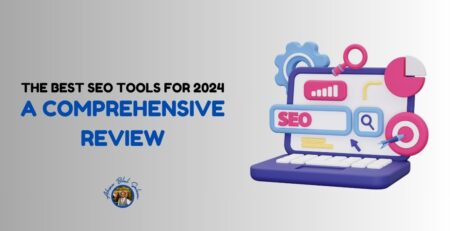What Are The Biggest SEM Mistakes That Drain Your Ad Budget?
Search Engine Marketing (SEM) is one of the most effective digital marketing strategies for driving targeted traffic, increasing brand awareness, and generating leads. However, running an SEM campaign without proper strategy can lead to wasted ad spend, poor conversions, and low ROI. Many businesses unknowingly make SEM mistakes that drain their ad budget without delivering significant results. To maximize your SEM success, it’s crucial to identify and avoid these costly errors.
Ignoring Negative Keywords
One of the most common yet overlooked SEM mistakes is failing to use negative keywords. Negative keywords prevent your ads from showing for irrelevant searches, ensuring that your budget is spent only on highly relevant audiences. Without them, you may end up paying for clicks from users who are not interested in your product or service. For instance, if you sell high-end watches, you might want to add “cheap” or “free” as negative keywords to avoid attracting bargain shoppers.
Not Optimizing for Mobile Users
With the increasing number of mobile searches, having an SEM strategy that isn’t mobile-friendly is a major budget-wasting mistake. Many advertisers fail to create mobile-optimized landing pages, leading to high bounce rates and poor conversion rates. Ensure that your ads and landing pages load quickly, are easy to navigate, and provide a seamless user experience across all devices.
Bidding on Broad Match Keywords Only
Using broad match keywords without considering other match types (phrase match, exact match, and broad match modifier) can quickly exhaust your budget. Broad match keywords trigger ads for a wide range of related searches, including irrelevant queries. Instead, use a combination of match types to control which searches trigger your ads and refine them based on performance data.
Ignoring Quality Score
Google Ads assigns a Quality Score to your keywords based on relevance, click-through rate (CTR), and landing page experience. A low Quality Score increases your cost-per-click (CPC) and reduces your ad placement. To improve Quality Score, focus on creating highly relevant ad copy, using targeted keywords, and optimizing landing pages for better user experience.
Neglecting Ad Extensions
Ad extensions provide additional information about your business, such as location, contact details, site links, and callouts. Many advertisers fail to utilize ad extensions, missing out on opportunities to increase their ad’s visibility and CTR. Implement relevant ad extensions to make your ads more informative and engaging.
Failing to Track Conversions Properly
Without proper conversion tracking, you have no clear insight into which ads and keywords are driving real results. Many businesses make the mistake of focusing solely on clicks without analyzing how those clicks translate into leads or sales. Use Google Ads conversion tracking or integrate with Google Analytics to measure and optimize performance based on actual results.
Setting and Forgetting Your Campaigns
SEM is not a one-time setup strategy; it requires continuous monitoring and optimization. Advertisers who launch a campaign and never revisit it often waste their budget on underperforming ads. Regularly review your campaigns, adjust bids, test new ad variations, and analyze performance metrics to ensure maximum efficiency.
Overlooking Audience Targeting
Effective audience targeting can significantly improve your ad performance, yet many advertisers fail to refine their targeting settings. Broad targeting can lead to wasted ad spend on users who are not likely to convert. Use audience segmentation, demographics, retargeting, and customer intent signals to ensure your ads reach the most relevant prospects.
Ignoring Competitor Analysis
Your competitors can provide valuable insights into what works and what doesn’t in your industry. Ignoring competitor research can result in ineffective strategies and wasted ad spend. Use tools like Google Ads Auction Insights, SEMrush, or SpyFu to analyze your competitors’ ad strategies and refine your own campaigns accordingly.
Poorly Designed Landing Pages
Even the most well-targeted ads will fail if they lead to an unoptimized landing page. A slow, cluttered, or irrelevant landing page can discourage users from converting, resulting in wasted clicks. Ensure that your landing pages are fast, visually appealing, and aligned with your ad messaging to maximize conversions.
Not A/B Testing Your Ads
Running the same ad copy and creatives without testing alternatives is a missed opportunity for improvement. A/B testing allows you to compare different headlines, descriptions, calls to action, and images to determine which elements drive the best results. Continuous testing and optimization help refine your ads and maximize your ad spend efficiency.
Using Generic Ad Copy
Ad copy that lacks relevance or fails to engage users often results in low CTR and poor performance. Many businesses make the mistake of using generic, one-size-fits-all messaging rather than crafting tailored, compelling ad copy. Focus on writing clear, benefit-driven, and keyword-optimized ads that directly address user intent.
Failing to Adjust for Seasonal Trends
Many industries experience fluctuations in demand based on seasons or events. Failing to adjust your SEM strategy for seasonal trends can lead to either missed opportunities or wasted budget during low-demand periods. Plan ahead, increase bids during peak seasons, and pause underperforming ads when demand is low.
Overspending on Underperforming Keywords
Continuing to bid on keywords that fail to convert is a major waste of budget. Regularly analyze keyword performance and pause or adjust bids on underperforming keywords. Shift your budget to high-converting keywords to improve ROI.
Not Taking Advantage of Remarketing
Many visitors don’t convert on their first visit, which is why remarketing is essential. Businesses that neglect remarketing campaigns miss the chance to re-engage interested prospects. Use remarketing ads to target users who have previously visited your site and encourage them to complete their purchase or action.
Conclusion
Avoiding these SEM mistakes can help you maximize your ad budget, improve performance, and achieve better ROI. From using negative keywords and refining audience targeting to optimizing landing pages and leveraging A/B testing, every aspect of your campaign plays a role in its success. By continuously monitoring and optimizing your SEM strategy, you can ensure that every dollar spent contributes to meaningful results and business growth.










